Green beans are probably one of the most readily available vegetables at the grocery store. So why grow your own? First, they’re easy and quick to produce, making them a good choice for a beginning gardener. Second, and probably more important, growing your own beans allows you to enjoy the great variety of beans available, including some gourmet favorites that might be harder to come by at your local store or even a farmer’s market.
For best results, especially in containers or a new garden, look for seeds that have been inoculated with the rhizobium bacteria, which helps the beans fix nitrogen in the soil.
Plant by plant: See how to grow all the top summer crops
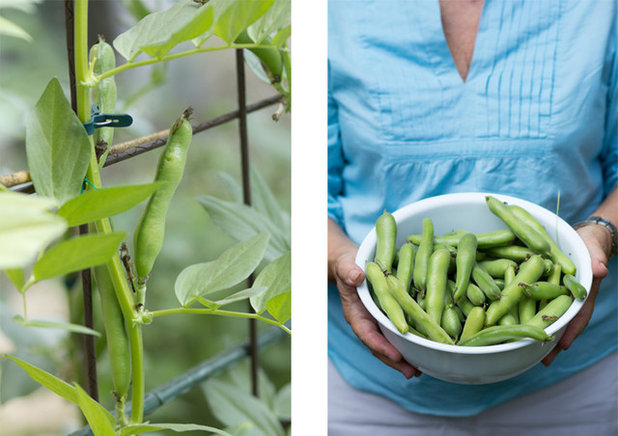
Lisa Nieschlag "Liz & Jewels"
Snap beans are what most people first think of in the bean family; this is the generic name for string beans and green beans. Traditionally, snap beans have long green pods, but you’ll also find some that are yellow (often called wax beans), purple and multicolored. Bush varieties, which reach 1 to 3 feet tall, have a shorter production season than climbing, or pole, varieties, which have vines that can reach up to 15 feet long. Filet beans, or haricots verts, are thin versions of snap beans that should be harvested when young.
Shelling beans, also called “shellies," are dry beans that can be harvested and shelled to be eaten while they are still green. You’ll also see them referred to as horticultural beans or gourmet flageolet beans.
Dry beans include the familiar pinto, kidney, navy and cannellini beans as well as more esoteric varieties. Dry beans are kept on the bush or vine until the pods shatter, then they're harvested, shelled and stored (think of jars of beans in a pantry or popular soup beans).
Lima beans evoke strong feelings in people, so keep that in mind if you add them to your garden. They combine features of both snap and dry beans. They look like snap beans and are available as bush and pole varieties, but are slower growing and need to be shelled before eating. They can be eaten green or dried.
Soybeans, or edamame, though technically not in the same family as other beans, are gaining in popularity in home gardens and grown in the same conditions. These humidity-loving beans produce fuzzy pods on bushes and are a great protein source. The term "edamame" can be used as a synonym for "soybean" and can also refer to the beans once they’re shelled as well as to a dish made from the beans.
Scarlet runner beans are used primarily as a quick-growing flowering vine, but you can eat the beans when they’re young, up to about 3 inches long.
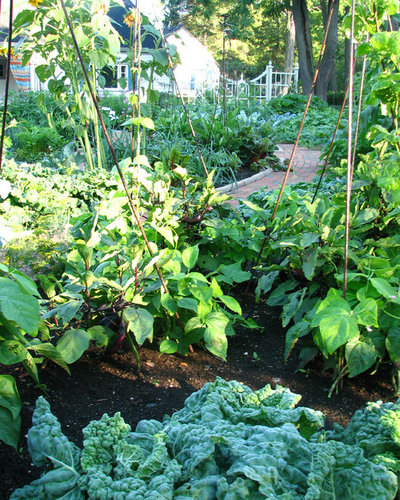
The Brickman Group, Ltd.
When to plant: Once soil temperatures have warmed, probably around 60 to 70 degrees Fahrenheit (15.5 to 21 degrees Celsius); seeds will rot in the ground if the soil is too damp or cold.
Days to maturity: Snap beans: 45 to 80 days; shelling beans: 70 to 80 days; dry beans: 85 to 100 days; lima beans: 65 to 100 days; soybeans: 65 to 95 days
Light requirement
: Full sun
Water requirement: Keep the soil moist but not overly wet once plants emerge
Favorites:- snap beans: Blue Lake, Émérite (haricots verts), Garden of Eden, Kentucky Wonder, Lazy Housewife, Marvel of Venice, Northeaster, Purple Queen, Ramdor, Romano, Royal Burgundy, Tricolor
- shelling beans: Borlotto, Chevrier, flageolet, French horticultural bean, Great Northern white
- dry beans: shelling bean varieties, Aztec Dwarf White, European Soldier, Hutterite Soup Beans, Jacob’s Cattle, Kenearly Yellow Eye, New Mexico Appaloosa
- lima beans: Christmas, Fordhook 242, Henderson Bush (short season), King of the Garden
- soybeans: Butter beans, Early Hakucho, Envy, Midori Giant
- scarlet runner beans: Painted Lady Improved, Scarlet Emperor
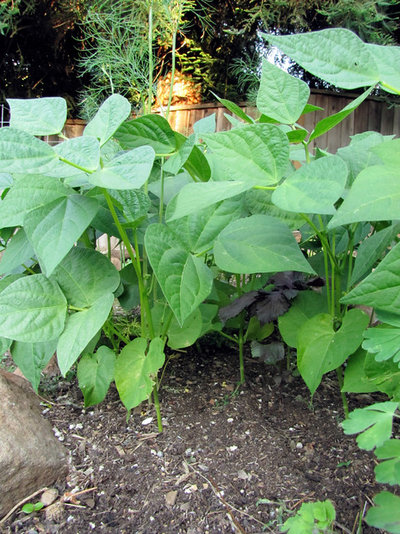 Planting and care:
Planting and care: Sow seeds in loose, well-drained, moist soil. Don’t worry about tilling too deeply, as beans have shallow roots. Space them 1 inch deep (lima beans can be a bit shallower) and 1 to 3 inches apart, with 2 to 3 feet between rows.
Begin watering when seedlings emerge and keep the soil moist but not soggy. Fertilize once the plants begin growing, then again when the beans begin to form. Mulch when the plants reach about 6 inches tall.
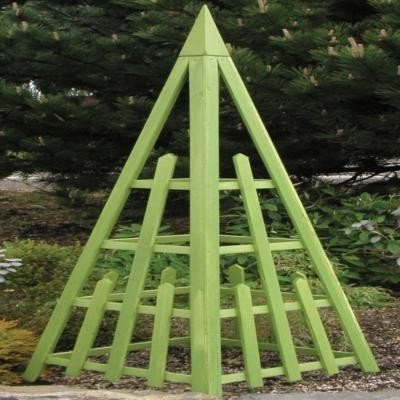
Unique Gardens and Gifts
Arboria Irish Moss Pyramid Trellis - $123.04
Provide support for pole beans with a single pole, trellis, grid system, tepee-like structure made of poles, wire or twine interwoven as a web-like structure, or even a wall or fence.
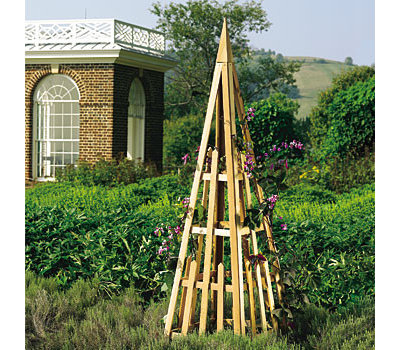
Monticello
Cedar Plant Pyramid - $165
Make sure the support is tall enough to handle the final length of the vine. Start training the vines when they’re about 6 inches tall.
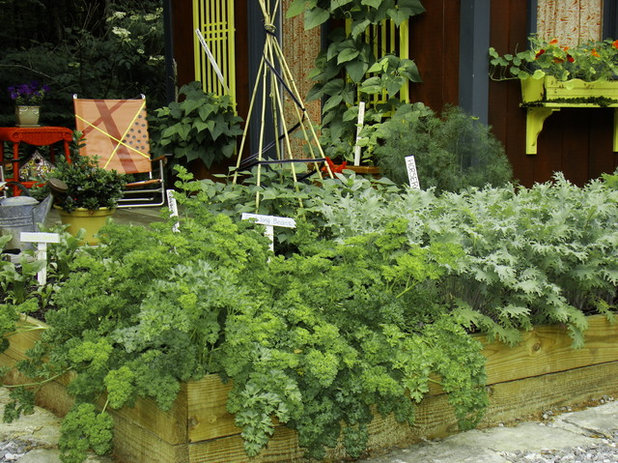
Robin Amorello, CKD CAPS - Atmoscaper Design
You can also grow beans in a container or raised bed. Choose one at least 8 to 10 inches deep (pole beans need more room than bush beans) and 12 inches wide and fix any supports for climbers in place before planting.
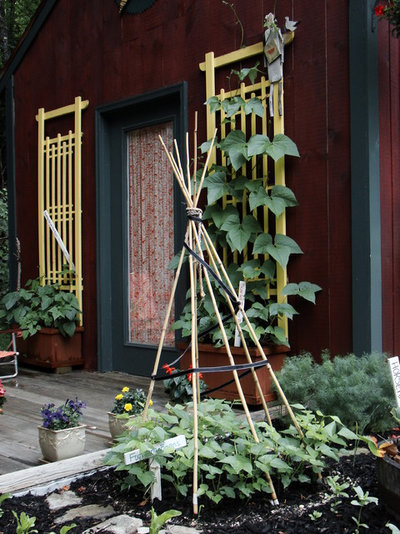
Robin Amorello, CKD CAPS - Atmoscaper Design
Beans are subject to a number of common garden pests, including aphids, different beetles, spider mites and whiteflies. Consider row covers for bush varieties to protect them when they’re young. Downy mildew, bean mosaic diseases and rust may be problems as well.
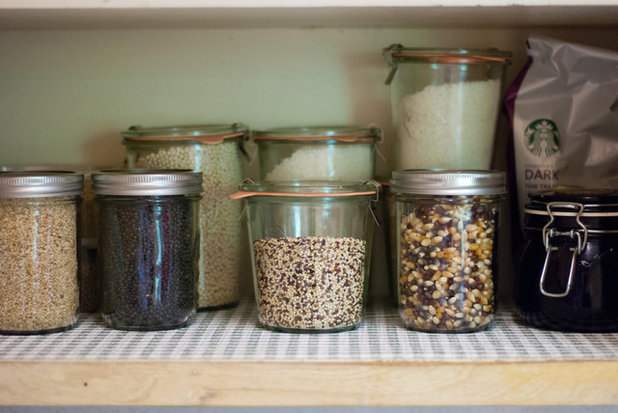
Kate
Harvest: Pick snap beans every couple of days once they begin to mature, so the plant will continue to produce. For dry beans, wait until the bean pods dry out or start to shatter, then remove the beans from the pods and dry and store them. Pick shelling beans about two to three weeks before the “dry bean” stage, and limas and soybeans when ripe.





